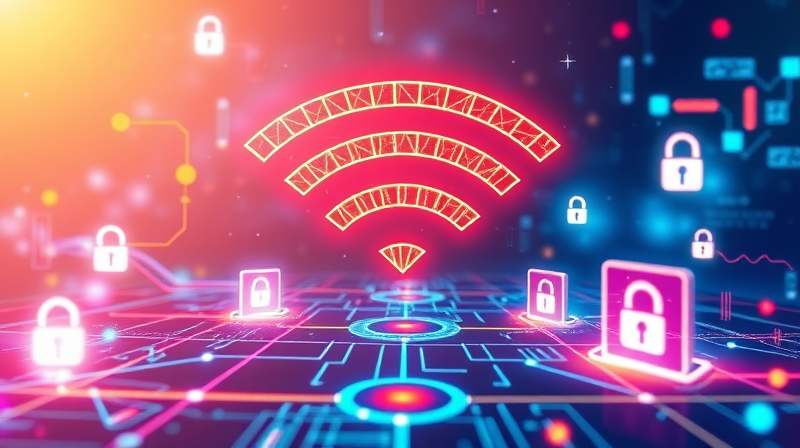In today's interconnected world, establishing a secure and reliable Wi-Fi connection is more important than ever. With billions of devices relying on wireless access, making sure that your network is both protected and efficient can have lasting benefits for your privacy and productivity. Whether you are setting up your home network, managing office connectivity, or using public Wi-Fi on the go, following proven security measures is essential.
Securing your network not only protects your sensitive data, but also prevents unauthorized access and cyber threats. A reliable connection builds trust between users and their digital environment, ensuring that online activities are conducted seamlessly. While technology continues to evolve, the basic principles of network security remain a cornerstone of safe digital communication.
Key Steps to Enhance Your Wi-Fi Security
Adopting state-of-the-art security protocols and best practices can drastically reduce the risk of vulnerabilities. Below are some vital steps that you can implement to create a resilient network infrastructure:
- Upgrade to WPA3 Encryption: Transitioning to WPA3, the latest security protocol, provides advanced encryption that makes it tougher for hackers to exploit your network.
- Use a Strong Router Password: Create a unique and complex password mixing upper and lower case letters, numbers, and symbols, to secure your router’s admin interface.
- Enable Two-Factor Authentication: Adding an extra layer of protection ensures that even if your password is compromised, unauthorized users can’t easily access your network settings.
- Update Router Firmware Regularly: Frequent firmware updates patch vulnerabilities and improve overall performance by keeping your router current with the latest security features.
- Segment Your Network: Creating distinct networks for personal, guest, and IoT devices limits exposure and prevents unauthorized access from affecting your main resources.
- Secure Your SSID: Choosing a unique network name without revealing personal information minimizes the risk of targeted attacks, while still making your network identifiable to your devices.
- Implement Protected Management Frames (PMF): This feature defends against attacks that manipulate network management frames, a critical enhancement especially when using WPA3.
- Deploy a Network Firewall: Utilizing both built-in router firewalls and additional software firewalls offers a double layer of defense against malicious traffic.
- Disable Remote Administration: Limiting access to your router’s configuration by disabling remote management greatly reduces exposure to external threats.
- Monitor and Manage Connected Devices: Regularly reviewing devices connected to your network and employing MAC filtering can help in quickly detecting and responding to unauthorized access attempts.
Each of these steps plays a crucial role in building a secure Wi-Fi environment. The measures not only stop potential cyber intruders, but often assist in enhancing the functional performance of your network.
For instance, updating your router firmware and segmenting networks not only help in security management but also optimize the routing of data. Taking these proactive steps means investing in a smoother and more dependable connectivity experience that can support your digital lifestyle.
In addition to these core measures, managing the use of public Wi-Fi is critical to maintaining data integrity. Public networks can be breeding grounds for cyber threats if not approached correctly.
When utilizing public or shared networks, it is advisable to use technologies that secure data transmission over potentially open networks. One of the best practices is to implement a trusted VPN service which encrypts your traffic and ensures safe browsing even when you are away from secure home or office networks.
It is equally important to turn off auto-connect features on your devices when in public areas. This step prevents your connections from automatically linking to potentially risky hotspots. Verifying network names before connecting is another essential habit to avoid falling victim to deceptive networks known as "Evil Twin" hotspots.
Beyond these precautions, emerging technologies are set to transform the landscape of Wi-Fi security. Future advancements like Wi-Fi 7 are already promising improvements such as higher throughput, lower latency, and enhanced device management capabilities. Additionally, the integration of AI-driven threat detection and Zero Trust Architecture (ZTA) protocols is poised to redefine how networks are protected.
Furthermore, embracing new methodologies such as multi-link operations will ultimately enhance connectivity efficiency and provide further protection against unauthorized access. While these emerging solutions may seem complex, they represent the future of reliable and secure digital communications.
Maintaining a secure Wi-Fi network is not simply about keeping potential hackers at bay—it is about establishing an environment where data flows freely under controlled, safe conditions. This, in turn, supports professional growth, personal communications, and the overall digital experience.
In conclusion, by following these concrete steps—upgrading encryption methods, securing passwords, updating firmware, and segmenting networks—you create a robust barrier that safeguards your data and ensures uninterrupted performance. Staying abreast of emerging trends like AI and Wi-Fi 7 will further bolster your defenses and prepare you for future challenges in the digital realm.
Adopting these practices is a powerful way to secure not only your network but also the vast digital footprint your modern life creates. As technologies evolve, it remains imperative to stay informed and proactive in managing your network’s security.







